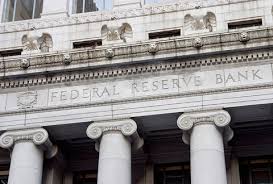
The Federal Reserve [1] announced that it would alter its standard supplementary leverage ratio rule. This move would make it easier and accessible for banking organizations to be able to provide credit to households and businesses.
This change by the Fed will be only a temporary shift. This tweak will not include any U.S. Treasury securities and deposits at any Federal Reserve Banks. Currently, the plans are for the change to officially be in effect through March 31, 2021.
With quickly deteriorating liquidity conditions in the market and the fact that financial institutions are experiencing an influx of customer deposits, as well as heightened levels of the reserve, the regulatory confines that these growth indicators bring with them pose possible obstacles to the firms’ ability to operate successfully as credit providers—particularly to households and businesses desiring it.
As such, the hope for this temporary change to the supplementary leverage ratio is that it will lessen the negative effects of such confines, allowing the firms to better support the economy’s survival and ultimate evolution.
Along with this announcement, the Fed stated that since the majority of financial institutions’ capital and liquidity levels have multiplied exponentially, this is exactly what the Board is now encouraging them to use that momentum and positive statistics in order to help support and bolster households and businesses. The Fed is essentially stepping in and offering assistance so that the institutions can then do the same for households and businesses.
By providing this temporary exclusion in the interim final rule, the Fed provides the opportunity for banking organizations to expand their balance sheets so that they can remain serving their clientele directly (households and businesses) as financial intermediaries.
There are, however, stipulations surrounding this shift. In general, the supplementary leverage ratio applies to those financial institutions with more than $250 billion in total consolidated assets. There is also a standard obligation for the institutions to maintain a base ratio of 3% (at minimum, weighed against total leverage exposure). Some financial institutions, specifically those that are the biggest and most systematic, will face a more strict set of requirements. This temporary shift is possible by the Fed lowering tier 1 capital requirements of holding companies by an estimated 2% in aggregate.
The Fed’s action is effective immediately.